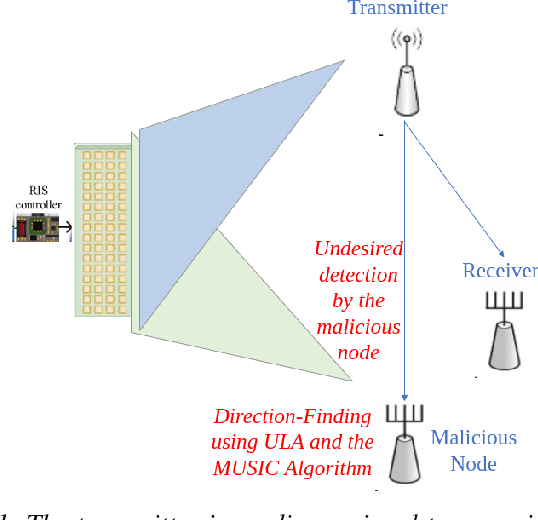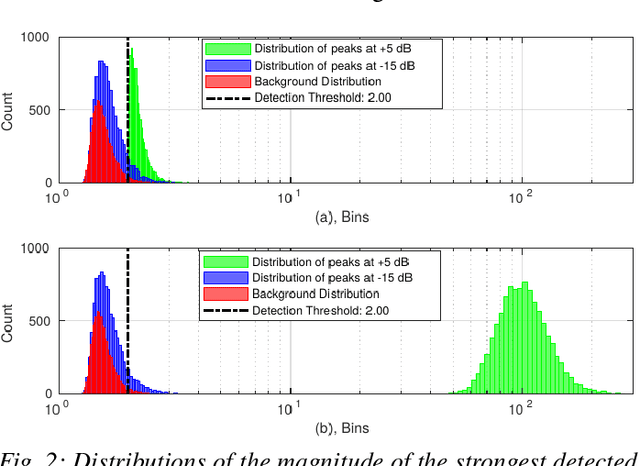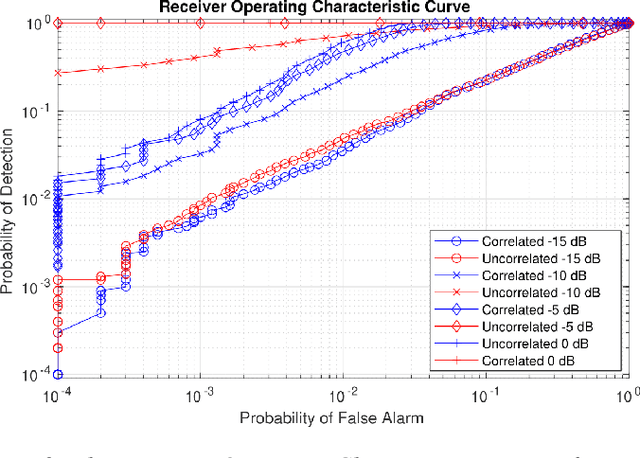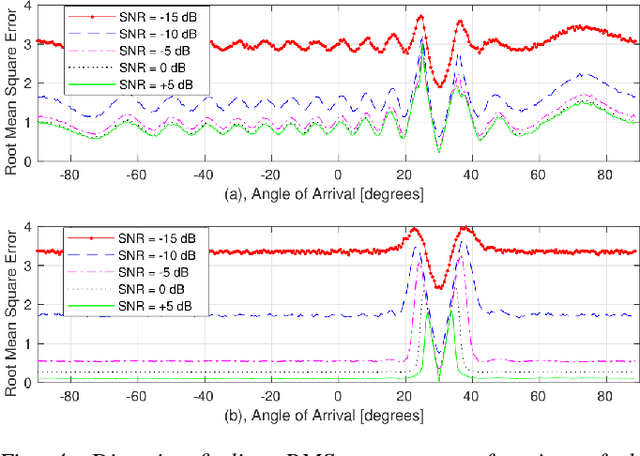Anders M. Buvarp
Probability-Reduction of Geolocation using Reconfigurable Intelligent Surface Reflections
Oct 18, 2022



Abstract:With the recent introduction of electromagnetic meta-surfaces and reconfigurable intelligent surfaces, a paradigm shift is currently taking place in the world of wireless communications and related industries. These new technologies have enabled the inclusion of the wireless channel as part of the optimization process. This is of great interest as we transition from 5G mobile communications towards 6G. In this paper, we explore the possibility of using a reconfigurable intelligent surface in order to disrupt the ability of an unintended receiver to geolocate the source of transmitted signals in a 5G communication system. We investigate how the performance of the MUSIC algorithm at the unintended receiver is degraded by correlated reflected signals introduced by a reconfigurable intelligent surface in the wireless channel. We analyze the impact of the direction of arrival, delay, correlation, and strength of the reconfigurable intelligent surface signal with respect to the line-of-sight path from the transmitter to the unintended receiver. An effective method is introduced for defeating direction-finding efforts using dual sets of surface reflections. This novel method is called Geolocation-Probability Reduction using Dual Reconfigurable Intelligent Surfaces (GPRIS). We also show that the efficiency of this method is highly dependent on the geometry, that is, the placement of the reconfigurable intelligent surface relative to the unintended receiver and the transmitter.
Constant Curvature Curve Tube Codes for Low-Latency Analog Error Correction
May 24, 2022



Abstract:Recent research in ultra-reliable and low latency communications (URLLC) for future wireless systems has spurred interest in short block-length codes. In this context, we introduce a new class of high-dimension constant curvature curves codes for analog error correction of independent continuous-alphabet uniform sources. In particular, we employ the circumradius function from knot theory to prescribe insulating tubes about the centerline of constant curvature curves. We then use tube packing density within a hypersphere to optimize the curve parameters. The resulting constant curvature curve tube (C3T) codes possess the smallest possible latency -- block-length is unity under bandwidth expansion mapping. Further, the codes provide within $5$ dB of Shannon's optimal performance theoretically achievable at the lower range of signal-to-noise ratios and BW expansion factors. We exploit the fact that the C3T encoder locus is a geodesic on a flat torus in even dimensions and a generalized helix in odd dimensions to obtain useful code properties and provide noise-reducing projections at the decoder stage. We validate the performance of these codes using fully connected multi-layer perceptrons that approximate maximum likelihood decoders. For the case of independent and identically distributed uniform sources, we show that analog error correction is advantageous over digital coding in terms of required block-lengths needed to match {signal-to-noise ratio, source-to-distortion ratio} tuples. The best possible digital codes require two to three orders of magnitude higher latency compared to C3T codes, thereby demonstrating the latter's utility for URLLC.
 Add to Chrome
Add to Chrome Add to Firefox
Add to Firefox Add to Edge
Add to Edge